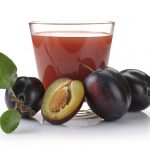Before treating stains, you have to pay attention to these points
Read the product label first!
Product labels tell you how to properly use the product and what type of fabric and surfaces the product can and cannot be used on. Garment care labels provide the manufacturer’s instructions for cleaning the garment. For the best cleaning performance, read and follow both product label directions and garment care labels.
Colourfast Test
Before using a stain remover on a washable fabric, always test for colourfastness. Apply the stain remover directly to an unnoticeable part of the garment, such as an inside seam. Wait 5-10 minutes. Rinse with water. The stain remover is safe for the garment if the fabric colour doesn’t fade or bleed. Most stain removers can be used on most colourfast washables, such as cotton, polyester, polyester blends, and other synthetic fabrics.
Stain removers
Soil and stain removers come in many forms – each having its own benefits. Select the form that best suits your needs.
• Prewash stain removers: A full-strength stain treatment that’s applied directly to stains before the wash cycle.
• In-wash stain removers: Add along with detergent in wash cycle. They work as a complement or booster to your regular detergent. Some in-wash stain removers can also be applied directly to stains before the wash cycle.
Different types of stain removers
Spray – Easily controls the amount of product that’s applied directly on stains.
Stick – Easy and convenient for on-the-go stains.
Gel – Thick formula that stays where you put it, so ingredients can penetrate stain.
Foam – Penetrates deep into fabrics to break up stains on contact.
Wipes – Designed to treat stains on contact. They can be applied while wearing garments and are safe for all dry-cleanable fabrics.
Aerosol – Quickly penetrates stains with the press of a button.
Liquid – Quick and easy to add to wash or apply directly to stain.
Powder – Easily added to wash cycle or used for soaking.
Tablets – Portable, lightweight, and dissolves quickly in any water temperature and should be used in wash.
INGREDIENTS
The following are common ingredients used in many soil and stain removers. Not all products contain all ingredients.
• Surfactants/Cleaning Agents – Improve the wetting ability of water, loosen and remove soil with the aid of wash action, then emulsify, solubilize, or suspend soils in wash solution until soils are rinsed away. • Enzymes – Protease enzymes aid in breaking down complex protein stains and soils, such as grass and blood, so these stains and soils can be more easily removed by other detergent ingredients.
• Sodium Carbonate – Provides alkalinity, which aids in cleaning and softens water.
• Oxygen bleach – A type of bleach that maintains colour and whiteness and can be used with all fabrics.
• Stabilizers – Maintain high sudsing function, where suds level is an important indicator of cleaning power. They also help maintain stability of the product and its shelf life especially the enzymes and oxygen bleach.
• Preservatives – Substance used to protect against natural effects of product aging, e.g., decay, discolouration, oxidation, and bacterial attack. They also protect colour and fragrance.
• Fragrances – Provide pleasant scents to fabrics.
• Solvents – Prevent separation or deterioration of ingredients in liquid products. They also dissolve organic soils and clean without leaving residue.

